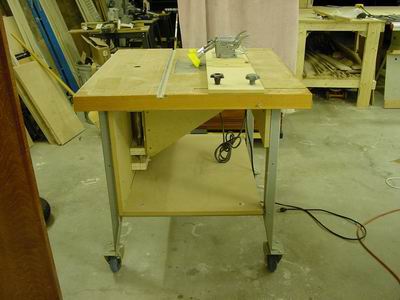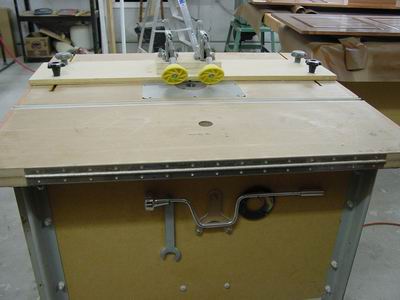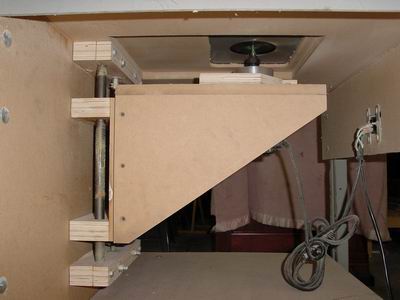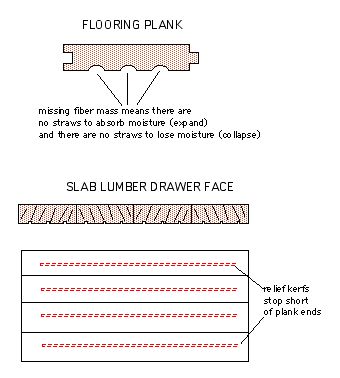Question
I find myself using my router table more often lately (mainly raised panel doors). I have a Porter-Cable 7519 (3.25HP, variable speed, plunge) router. I also purchased the PC aluminum table. Finally, I bought the adapter kit that allows me to adjust the router height with a knob from under the table (as long as I hold the plunge arm up).
I've noticed several issues with the table.
1) The aluminum leaves marks on the wood, which then require subsequent sanding.
2) The fence has a dust collector, but the majority of the sawdust seems to dump out under the table onto the floor and all over my shop.
3) It is very hard to get the wrenches in either over, under, or over-and-under the table to change bits.
4) I would like a slightly larger table.
5) The vertical adjustment with the adapter knob is quite awkward.
I've looked at the Mast-R-Lift and the Router-Lift so far. I also noted that the base on my router cannot be removed from the router itself. (The base on my Makita comes off with no problem!) Is a new router purchase necessary?
Yes, I know that a shaper might be a better choice, but it is not an option at this time for a number of reasons.
Does anyone have suggestions? The amount of production time I am losing due to bit changes and resanding is not conducive to profit-making.
Forum Responses
From contributor S:
I looked at router tables and thought that they were both too small and too expensive for what they were.
Oh, I forgot, I also made a router lift from a Shopnotes magazine issue a few months back. It works great.

Here is another view of the back. You can see the hinge I was talking about. The hole in the table is for raising and lowering the router. I can raise it plenty high enough to change the bits from the top.

Last pic. This is the router raiser that I mentioned from Shopnotes. Works great. I have used this for about a year and have never removed the router. Built the entire thing in a weekend.

I also built my own about 12 years ago. I also used MDF, but built a 4" high fence that slides on T tracks. I bought a phenolic insert for about $30. I also built a nice storage unit underneath for bits/jigs, etc. Building your own is the way to go. I bought a VS Freud 3 1/4 hp plunge router for $199 (I think it's an E2000 and still sells for the same 12 years later). I have never had a problem with it and it was half the price of anything on the market with that hp at the time. Anyway, the plunge feature makes it easier (space wise) to get a wrench underneath to change bits. I've seen stuff like in the pictures above, and these days it's all the rage to be able to remove the whole router for changes. I've never had the need to. In fact, I have never removed the router in 12 years! In any event, you gotta build your own, man.
When I replace my current setup, I will definitely be building my own table and cabinet. That will give me a larger top, customized dust collection, and built-in storage for router bits. I was trying to save some time and trouble by using an existing router lift and one of my existing routers. However, after taking a closer look at my 7539, I do not believe that I can raise the router high enough to easily change large bits. Even if I use an offset wrench for the bottom nut (closest to the router motor), there is very little room around a raised panel bit. A 7518 3.25HP VS Fixed Base is probably the way to go.
Contributor K, the paste wax took care of the marking problem. Thank you. Also, waxing the threads on my existing height adjustment mechanism greatly improved the ease of operation. I'm hoping that the wax lubricant will not attract lots of dust.
Contributor G, thanks for the reminder to laminate both sides of the table top.
Contributor S, thanks for the pictures. You've given me some ideas. By the way, I could not find the ShopNotes issue you mentioned. Their website does not list very recent back issues. Anyway, I think your pictures will suffice.
